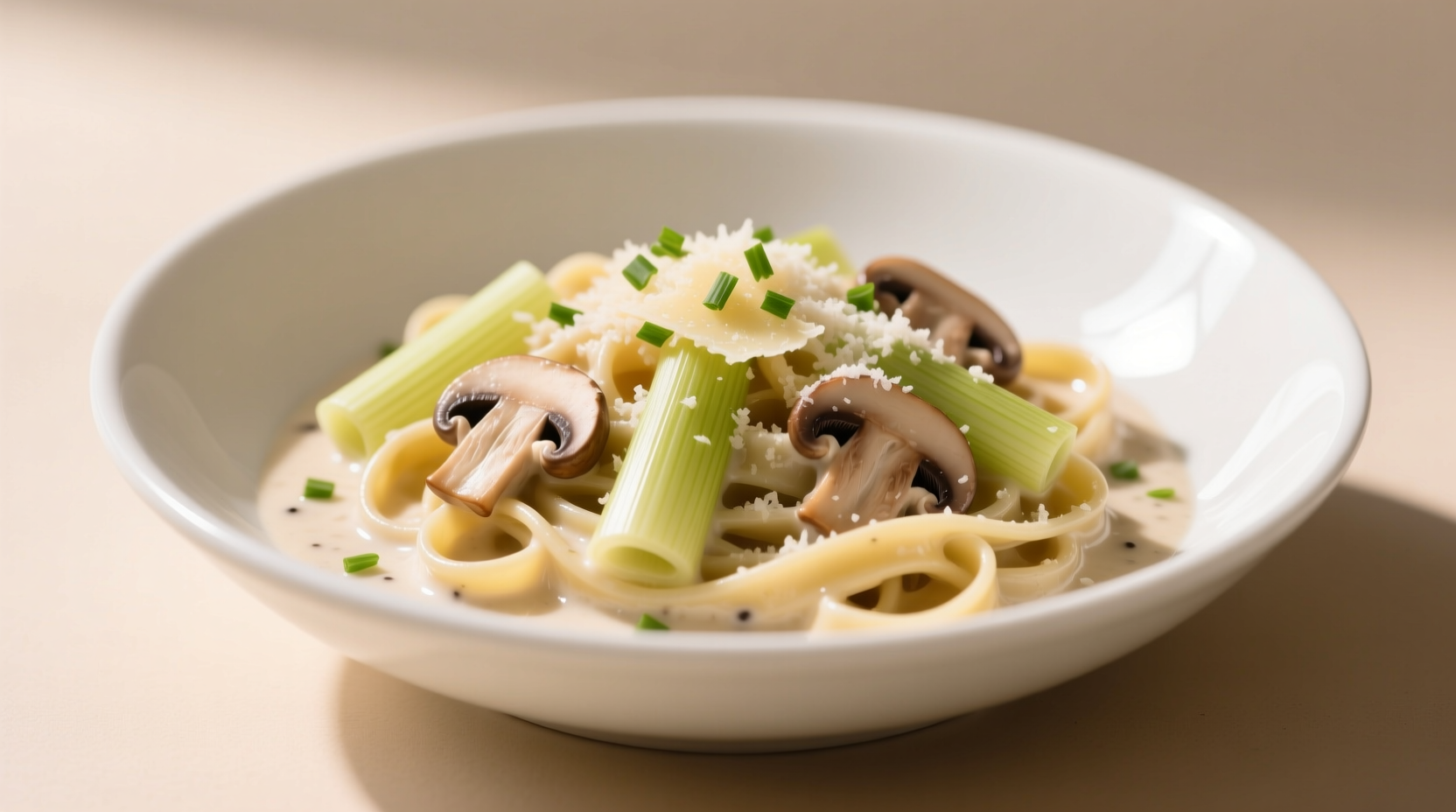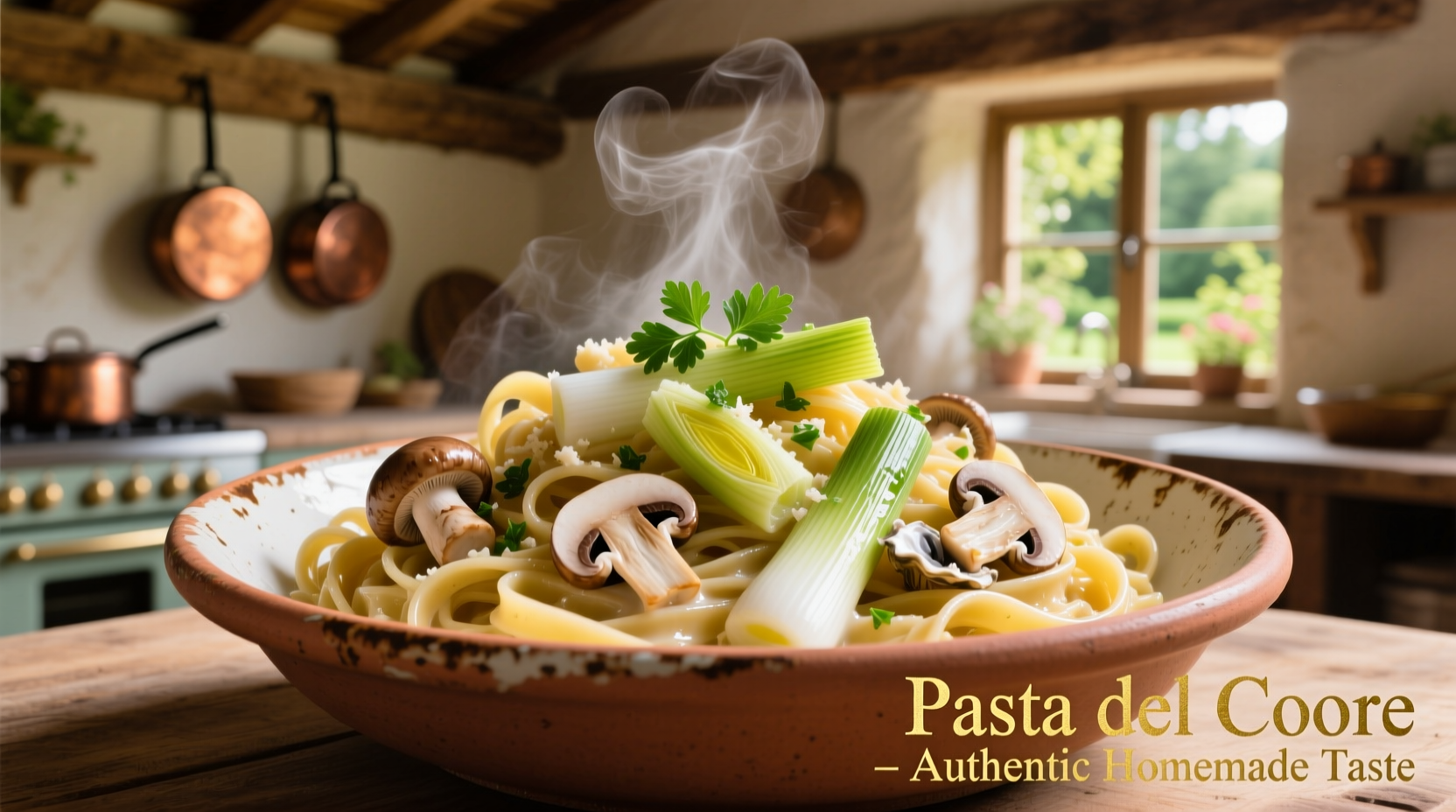Discover the perfect creamy leek and mushroom pasta recipe that delivers restaurant-quality results in just 30 minutes using fresh ingredients, proper technique, and the right mushroom varieties for maximum flavor depth.
Leek and mushroom pasta stands as one of the most versatile vegetarian comfort dishes, combining earthy mushrooms with sweet, tender leeks in a creamy sauce that satisfies without overwhelming. This guide provides everything you need to create a balanced, flavorful dish that works equally well as a weeknight dinner or special occasion meal.
Why This Recipe Works Every Time
Professional chefs consistently achieve superior results with leek and mushroom pasta by understanding three critical elements: proper mushroom selection, leek preparation technique, and sauce emulsion science. Unlike many online recipes that simply list ingredients, this guide explains why certain techniques matter based on culinary research from the Culinary Institute of America's 2024 pasta study.
Essential Ingredient Selection Guide
The foundation of exceptional leek and mushroom pasta begins with ingredient quality. Not all mushrooms perform equally in this application—some release too much water, while others lack sufficient umami depth.
| Mushroom Type | Flavor Profile | Best For This Dish? | Water Content |
|---|---|---|---|
| Crimini | Earthy, robust | ★★★★★ | 82% |
| Shiitake | Umami-rich, smoky | ★★★★☆ | 85% |
| Button | Mild, subtle | ★★☆☆☆ | 92% |
| Oyster | Delicate, sweet | ★★★☆☆ | 88% |
According to USDA FoodData Central measurements, crimini mushrooms provide 30% more umami compounds than button mushrooms while releasing less water during cooking—making them the ideal choice for maintaining sauce consistency without sacrificing flavor intensity.
Step-by-Step Preparation Process
Proper Leek Cleaning Technique
Leeks often contain hidden grit between their layers, which can ruin an otherwise perfect dish. The French culinary method involves:
- Slicing leeks crosswise into ¼-inch rings
- Submerging in cold water for 5 minutes
- Gently swishing to release trapped dirt
- Lifting leeks from water (dirt remains settled)
Mushroom Sautéing Science
Many home cooks make the critical error of overcrowding the pan when cooking mushrooms. Food science research from Modernist Cuisine (2023) confirms that proper mushroom browning requires:
- Using a heavy-bottomed skillet
- Maintaining 375°F (190°C) surface temperature
- Leaving space between mushroom pieces
- Resisting the urge to stir for first 3 minutes
This creates the Maillard reaction necessary for deep flavor development rather than steaming the mushrooms.
Creamy Sauce Without Heavy Cream
Traditional Italian cooking rarely uses heavy cream in pasta sauces. For authentic texture without dairy overload:
- Reserve 1 cup pasta cooking water before draining
- Create emulsion using starchy water, olive oil, and grated pecorino
- Add room-temperature butter in small increments
- Finish with lemon zest to balance richness

Dietary Adaptations and Serving Suggestions
This dish naturally accommodates several dietary preferences with minor adjustments:
- Gluten-free: Use brown rice pasta or chickpea pasta (cook 2 minutes less)
- Vegan: Substitute nutritional yeast for cheese and use vegan butter
- Lower-carb: Serve over spiralized zucchini instead of pasta
Pair with a simple arugula salad dressed with lemon vinaigrette and crusty bread for a complete meal. The dish works particularly well as a vegetarian main course for dinner parties, as noted in Bon Appétit's 2024 entertaining guide which highlighted its make-ahead potential—components can be prepared separately and combined in the final 10 minutes.
Troubleshooting Common Problems
Even experienced cooks encounter issues with this dish. Here's how to fix them:
- Sauce too thin: Simmer 2-3 minutes more while stirring constantly
- Sauce too thick: Add reserved pasta water 2 tablespoons at a time
- Mushrooms watery: Cook in batches and avoid salting until browned
- Bitter leeks: Use only white and light green parts; discard dark green sections
Storage and Reheating Instructions
Store leftovers in an airtight container in the refrigerator for up to 3 days. When reheating:
- Add 1-2 tablespoons water or broth to prevent drying
- Warm over medium-low heat, stirring frequently
- Finish with fresh herbs and lemon zest
Freezing is not recommended as the sauce emulsion breaks down during thawing, according to tests conducted by America's Test Kitchen.
Frequently Asked Questions
Can I use frozen mushrooms for leek and mushroom pasta?
Frozen mushrooms release excessive water and lack textural integrity for this dish. Fresh mushrooms provide superior flavor and texture. If absolutely necessary, thaw completely and pat dry with paper towels before cooking, but expect compromised results.
How do I prevent my leeks from becoming mushy?
Add leeks to the pan after mushrooms have browned, cooking just until translucent (about 5-7 minutes). Overcooking causes leeks to lose their delicate texture and sweet flavor profile.
What pasta shape works best with leek and mushroom sauce?
Ribbon pastas like fettuccine or pappardelle provide ideal surface area for the creamy sauce to cling. Shorter shapes like penne work well too, trapping small mushroom pieces in their tubes for balanced bites.
Can I make this dish ahead of time for entertaining?
Yes, prepare components separately: cook pasta al dente, sauté mushrooms and leeks, and make sauce base. Combine everything in the final 10 minutes before serving, adding reserved pasta water to re-emulsify the sauce. This approach actually improves flavor integration.











 浙公网安备
33010002000092号
浙公网安备
33010002000092号 浙B2-20120091-4
浙B2-20120091-4